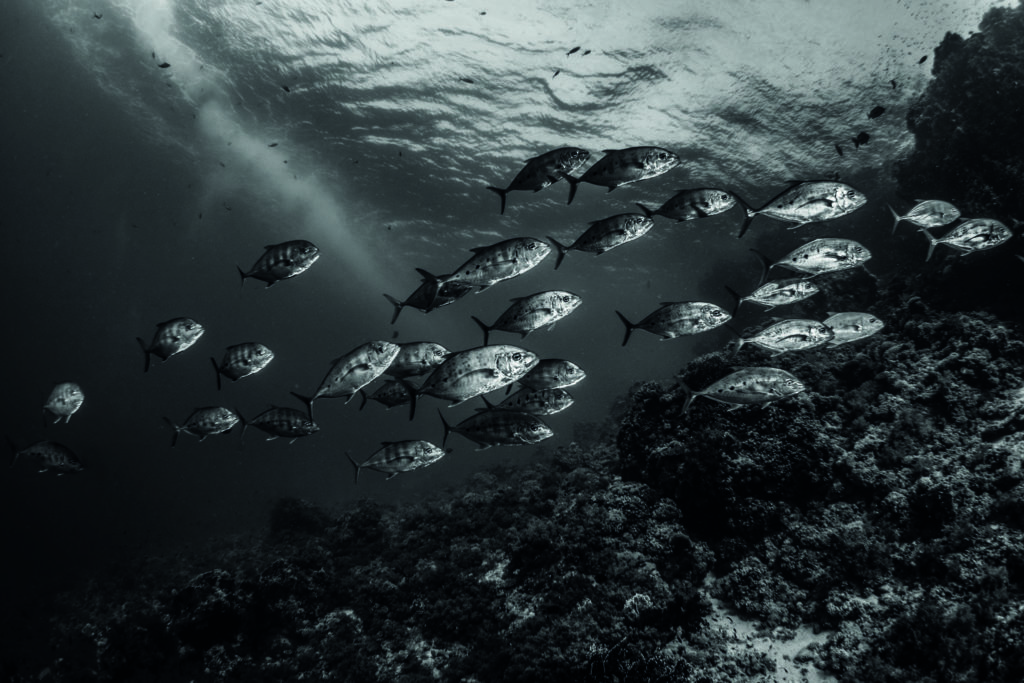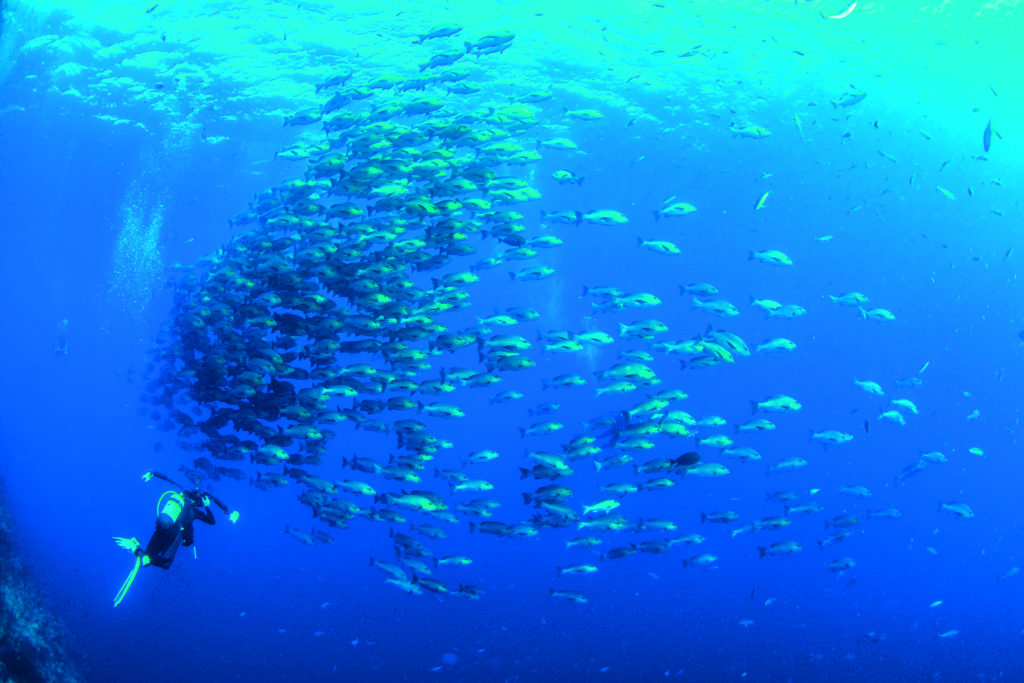A vast school of fish swimming together is always impressive. However, taking a good picture is not always easy – as Mario Vitalini explains, the trick is to show the group as a unity, and not as a messy, disorganised random group of individuals.
Fish come together for different reasons and at different times. Protection and feeding are the most-common drivers, but many species create huge aggregations for spawning at a determinate time of the year. This can be more predictable and therefore easier to capture because the location and time can be pinpointed precisely.
Schooling fish can be photographed all over the world at different times. The seasonal aggregations are more predictable and easier to photograph. The place that comes to my mind is the northern Red Sea, where snapper, jacks, batfish, unicorns and barracuda are among the many species that come together during the summer months.
On the other hand, striped catfish can be found around the Indo-Pacific all over shallow reefs year round, forming very photogenic feeding aggregations on a regular basis, and in areas such as the Tulamben region in Bali, or Apo Island in the Philippines, you can find horse-eye jack. While other species that are commonly found in groups require a bit more luck, you need to be at the right place at the right time. On a plus side, these ‘more-common’ fish tend to be overlooked and you can have the encounter all to yourself.
Seasonal aggregations attract a huge number of divers and finding the right photo opportunity can be tricky. A good example of this can be seen at Shark and Jolanda Reef, in Ras Mohammed National Park in the Red Sea. Here during the end of June and the beginning of July, huge numbers of snapper congregate to spawn. This, of course, attracts many divers wishing to witness the event. The number of divers in the water can be a problem for the photographer.
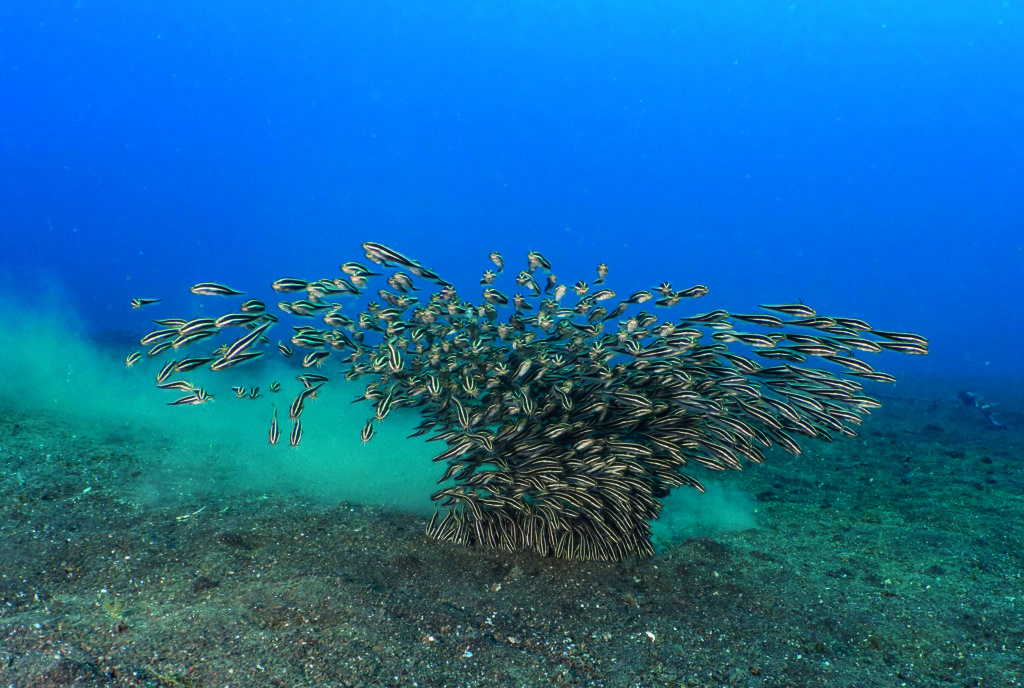
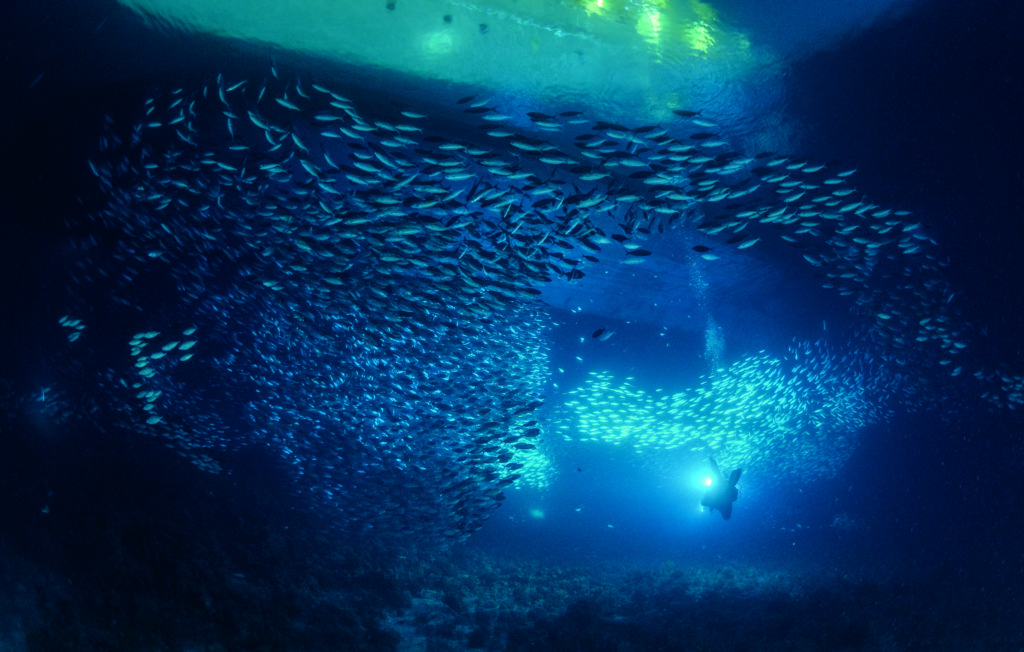
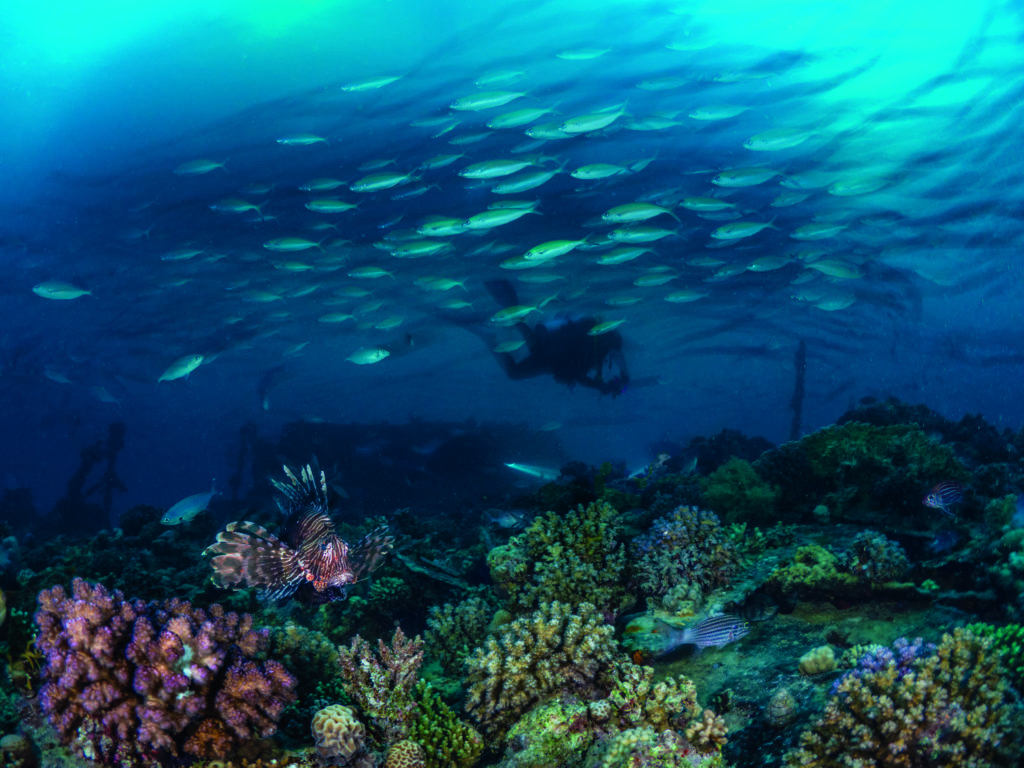
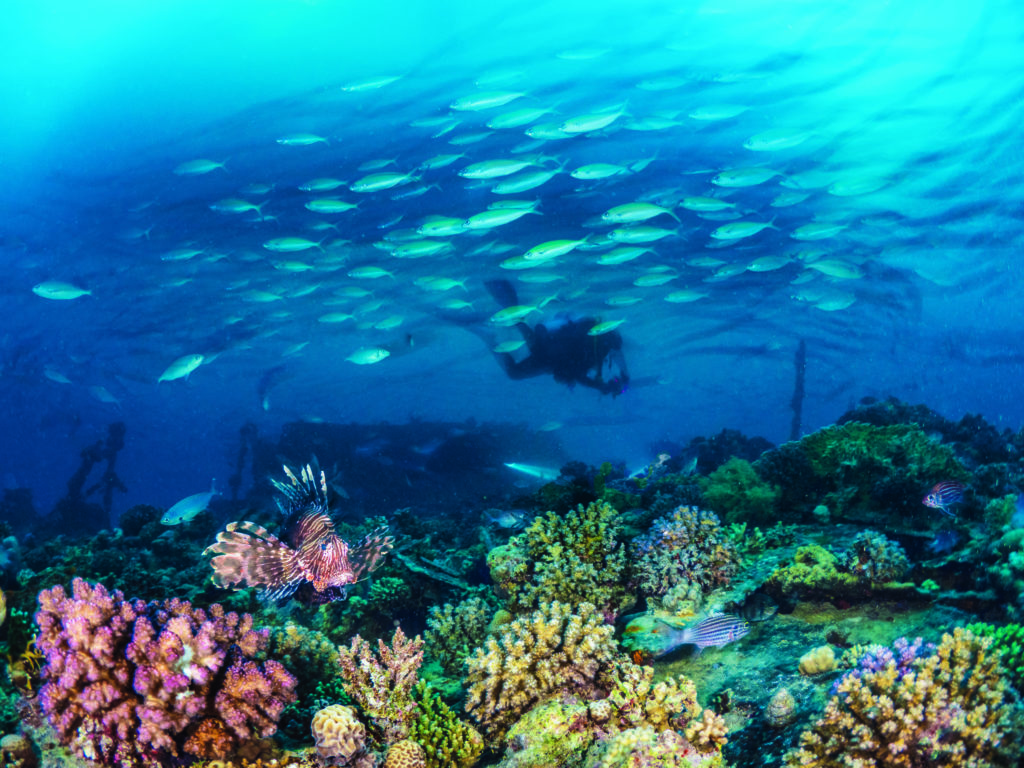
Secure A Good Shot – Tips And Techniques
Try to time your dive when there is the least amount of people around, but if it is not possible, remember that the curious attitude of many divers that wish to ‘be in the middle of the action’ drives them to swim towards the school. You can use this towards your favour by positioning yourself opposite these divers. The fish will swim away from the disturbance and head towards you, giving you a chance to capture the perfect shot. Equally, never swim under the school hoping for a good upward shot or a silhouette, your bubbles will only break the formation and split the school.
Contrary to normal underwater photography, the rule of getting as close as you can does not apply. When shooting fish groups, you will obtain much better results if you try to maintain a respectful distance. By doing so, you will make the group feel safer, and you will not be considered a predator – which in many cases will cause the school to split. You are much better maintaining your position and letting the fish swim to you, not the other way around. This may require a fair amount of patience and time, but the results can be very rewarding.
If you swim towards the school, the group may start swimming away from you, resulting in pictures of fish tails or, even worst, the group may split and form two or three smaller and less-photogenic groups.
Shooting from a considerable distance creates a series of problems, and the most important is light. The light from your flashguns will struggle to reach the subject. The only way to maximise the reach of your strobes besides cranking up the power is to remove the diffusers. These are designed to soften and spread the light, the opposite of what you want in this instance. To avoid problems with backscatter, position your strobes wide apart and behind the housing facing straight forward.
Other options are to use ambient light if the action happens at a shallower depth, or to convert your pictures to black and white.
Not every school behaves the same way. Some species are easier to photograph, such as snapper, jacks and barracuda. They normally prefer to remain in a fixed position and not wander along the reef or into the blue. Barracuda, for example, tend to stick together in a pack formation and these are very easy to approach because they do not break the formation. Other fish are much harder – the unicornfish, which in Egypt come together at the same time as the snapper, behave in the completely opposite way. They are together but each individual wanders around on its own, making it almost impossible to get a good photo. The blue parrotfish swim along the reef fast and do not stop at all, so a good photo opportunity is a question of quick reactions from the photographer and a healthy dose of luck.
Lens Selection And Composition
A wide-angle lens is essential when photographing schooling fish. If the school in question is a large one, you can go for a fisheye. But always bear in mind the barrel distortion these lenses create and aim to frame the group of fish in the middle of the frame from a distance so the distortion does not affect the image. If you know the school is not very big, a traditional rectilinear lens will be ideal. In my opinion, if in doubt go for a fisheye, that way you will have a great lens to shoot other reef scenes in case the schooling action you were hoping for is not playing along.
Try to time your shot so the school is in a pleasing formation, usually this will be a spherical group or a ring (jacks and barracuda). When the school is very big, it can yield very impressive pictures, remember these work best when you place a diver in the scene, such as a fellow photographer. This way, you can get a sense of scale.
When you frame your school, always look around the edges, try not to cut the formation and if possible, make sure the fish are surrounded by blue water and not the reef.
If you do not have a wide-angle option, you can use the school as a compositional element in the background, or try to get a detail or portrait of an individual within the school. For this, a macro lens is ideal, but you will need to get fairly close, which may not be appreciated by other photographers in the group, so be polite and let them shoot the school before you approach it.
The next time you find yourself in front of a school of fish, take your time, set your strobes apart and back, keep your distance and let the fish come to you. Your chances of coming back home with a great picture will be massively improved. Visit the Scuba Travel Website.
Photographs by Mario Vitalini

